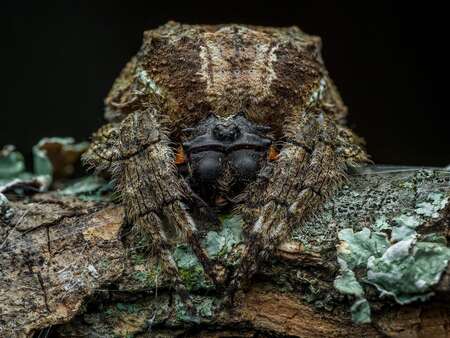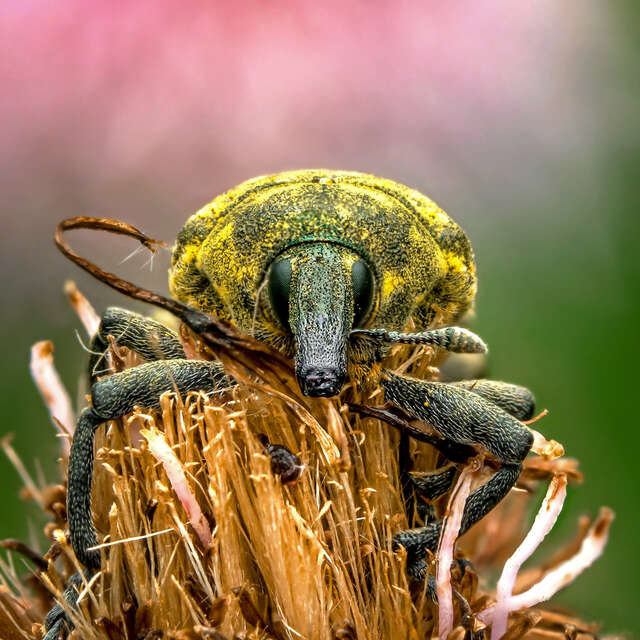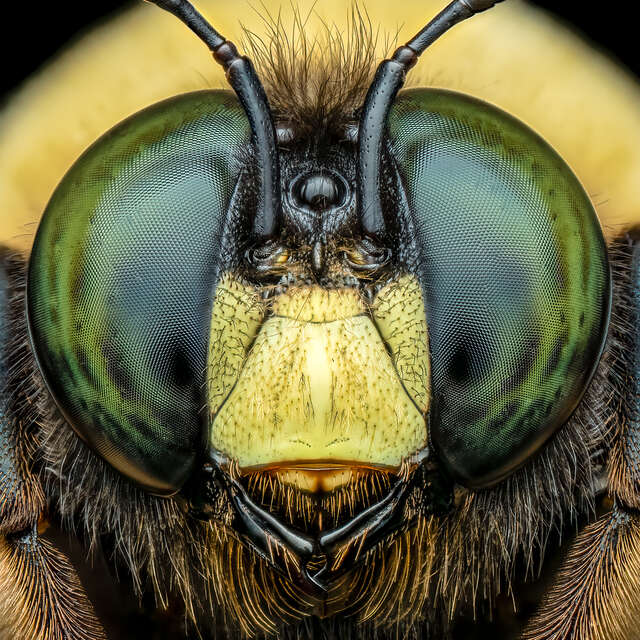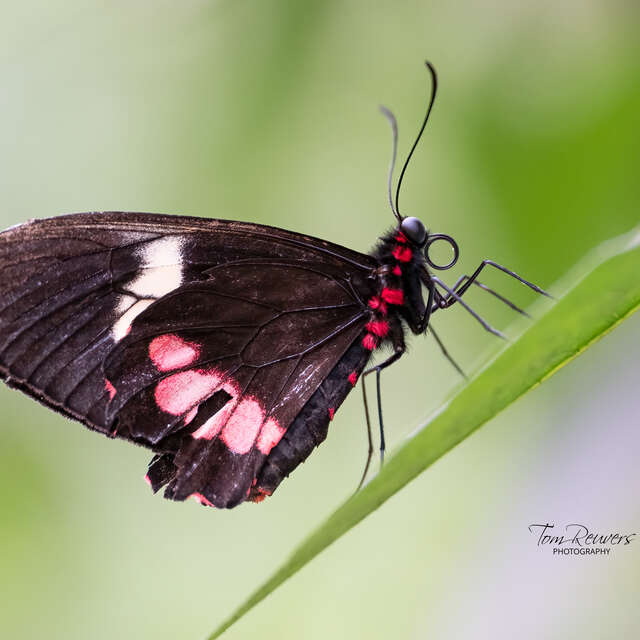What makes the better macro photo?
A highly detailed focus stacked shot, or a single shot with a blurry background and a shallow depth-of-field?
There is no definitive answer to that question, as it is always a matter of personal preference. However, when it comes to decide for a single or stacked shot, there are some factors that should be taken into consideration.
Let´s take a look at focus stacks vs. single shots from both an esthetic/visual point-of-view and a technical/visual point-of-view.
While a high level of details and focus is desirable in macro photography, it can lead to images that look ‘off’ or less visually appealing when created from extremely deep focus stacks.
Why is that? Our eye and brain always, even subconsciously, realize when an image does look unnatural or differs from our viewing habits. Although we rarely realize it during our daily life, our visual perception of the world around us is dominated by the relation of focus and out-of-focus areas. This can be translated to photography 1:1 and teaches us a lot about how and why images can look ‘off’ or ‘strange’.
Let me explain this with some examples:
Esthetic Focus On The Visual Aspects
Taking a single shot, or even a small focus stack, which means having a very shallow depth of field, compared to a deep stacked image, will result in
- a natural focus to out-of-focus fall-off (transition)
- considerably more out-of-focus areas, often smooth and blurry
- an obvious layer (and hence point) of focus
This gives great creative freedom and enables us to effectively lead the eye to the areas of interest.

Eyes, pedipalps, 1 legpair in focus, creating a perfect layer of interest, while still retaining a lot of out-of-focus areas, including a creamy background for an esthetic appearance
E-M1 Mark III | 60mm | f/8 | 1/160sec | ISO200| flash and diffuser
Technical Focus On The Visual Aspects
A focus stacked image, on the other hand, also has its advantages and fascination. Combining multiple photos into a stack with greater depth-of-field can:
- show more details & textures
- show more of the subject (or the subject in total focus even)
Producing a perfect focus stack from a technical standpoint is a great achievement. It is also often the right choice, when there is a lot of detail and texture that cannot be captured with just a single exposure.
Here, even the single shot of this fascinating parasitoid wasp alone, did show enough focus on the details, to be used. Thorax and head are in focus and provide an excellent area of interest for the viewer.
The Necessity To Focus Stack
Some camera setups simply require to focus stack for the images at a certain magnification to be usable. These setups produce photos with such a shallow depth-of-field, that they do not look good without combining several focus layers into one. A typical setup, like the one mentioned before, would be a full frame DSLR with a macro lens used at a magnification of 1:1 or even above (like lenses that go up to 2:1 and even 5:1 mag) at the closest focusing distance possible. But even with a superior (when it comes to depth-of-field straight out of camera) Micro-four-thirds camera, you can sometimes feel you need more DOF and to go for a focus stack.
This slimemold on rotten wood was impossible to capture in a single shot, even on the MFT sensor of the OM-D E-M1 III. The Magnification was high and the camera very close to the scene.
On the left you see the final result of a focus stack consisting of 23 photos, while the other photo is a single shot out of the stacking sequence.
The wings of this moth showed so many structures and details, that it was a classic contender for a smaller focus stack and i ultimately did not go for a single shot. Simply because, due to the size (depth) of the subject, it would have been very difficult to show all the features like head, antennae, legs and the wings, all the way to the tips, in focus with a single shot at such a high magnification.
These factors influence the photo´s depth-of-field the most:
- size of subject
- distance to subject
- magnification of the lens
- f-stop / aperture of the lens
- sensor format of the camera
The Extra Work
Processing focus stacks, especially the ones taken manually, often means investing a lot of extra time in post production.
There are cameras that will let you take a fully merged and processed focus stack in-camera – like the OM System OM-D cameras – and can do all the work for you by pressing one single button. This is extremely helpful, not only because it saves time, but also because the precision of the focus bracketing technique is hard to beat manually.
If you are not a big fan of spending too much time on the computer retouching your images, it might be better to have a setup with maximum depth-of-field, so you will only need to take one single photo, or let´s say a couple instead of many!
Problems with Focus Stacking
Despite the sometimes unnatural look of deep focus stacks, there are more aspects and challenges to keep in mind, when creating focus stacks with a great depth of field.
Movement Of The Subject
If the subject is moving while taking the photos for the stack, you will either lose a thin layer of focus while you ‘scan’ the subject, or ghosting and repeated structures can appear in the merging process later.
The more photos you take for the stack, and the longer it takes, the higher the chances for movement and errors.
Finding the optimal number of steps for the stack is inevitable to get the best out of it.
Example: The following image is a focus stack of an Ocypus olens beetle, that was in defensive posture but slowly lowering its elevated abdomen, while I was photographing the stack.
It was impossible to get a stack of the complete beetle, as the abdomen was moving and never in full focus and so i decided to focus on the head instead.
Transition From In-Focus To Out-Of-Focus Areas
As mentioned earlier, the human eye and brain realize what looks natural or normal, and what does not. Using less steps and photos for a stack, results in a less abrupt transistion from in-focus to out-of-focus areas. This does especially show on ground textures, for example.
It does look very unnatural if a bigger, sharp area ends and transitions abruptly to a creamy out-of-focus area.
Tip: I often take a lot more photos than i will actually use for the stack in the end. This way i ensure i have enough material to control the actual area of focus and its transition in particular. I rarely use all of the material I got.
Conclusion
As already mentioned, there is no ‘right’ or ‘wrong’ decision – it is a matter of personal taste.
But a photo that looks ‘off’ irritates our eyes and brain and hence gets a different reception compared to a ‘natural’ looking shot.
When photographing focus stacks, it makes sense to try to make them look as natural as possible.
This applies to the range of the depth-of-field and also the focus fall-off.
If the fall-off is too abrupt, it will look highly unnatural and – at least in my opinion – rather unesthetic.
To illustrate this, here, both photos have the most important part of the subject in focus – the eyes.
But while the second one, the single shot, does not have enough depth-of-field to present the viewer´s eye enough area in focus, the one on the left is a focus stack of 4 images and increases the area in focus considerably, while still looking natural.
I could sell it as a single shot and nobody would notice that it is actually a stacked image.
Tip: Try creating the stack for the subject and then mask this back in to a single shot with an appealing focus fall-off in the background and ground, to keep a natural look. For this, it is great to always keep the seperate images of a focusstack, even if you create and merge it fully automated in-camera.
Don´t go for a deep focus stack just for the sake of taking a focus stack. Think about why and where a focus stack might work better than a single shot and make the (reception of the) focus stack believable. The choice between single shot and focus stack strongly influences the esthetic direction of the final photo.
Featured Products:
Want to learn more about Focus Stacking?
View articles, videos and user photos on our Focus Stacking & Bracketing feature page.

















